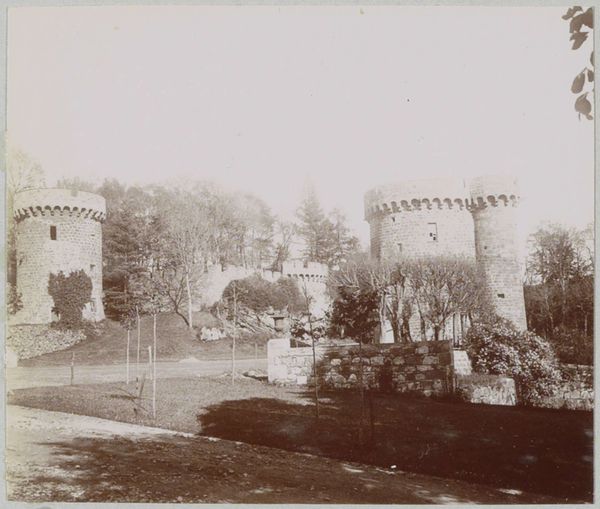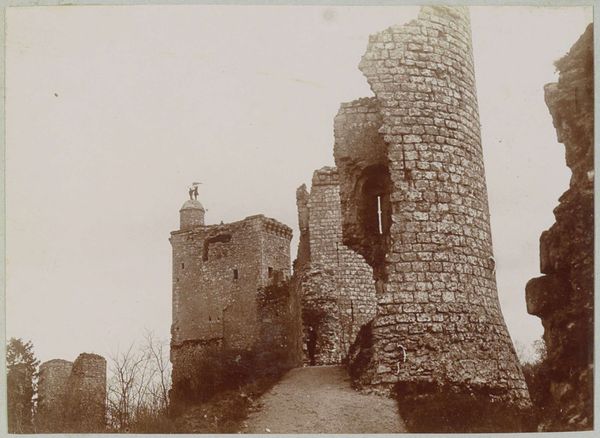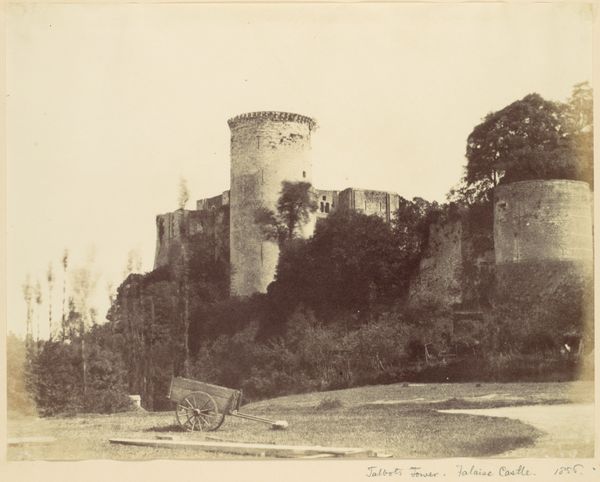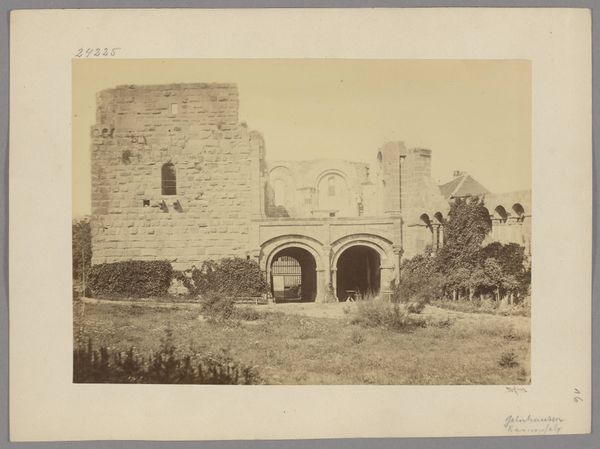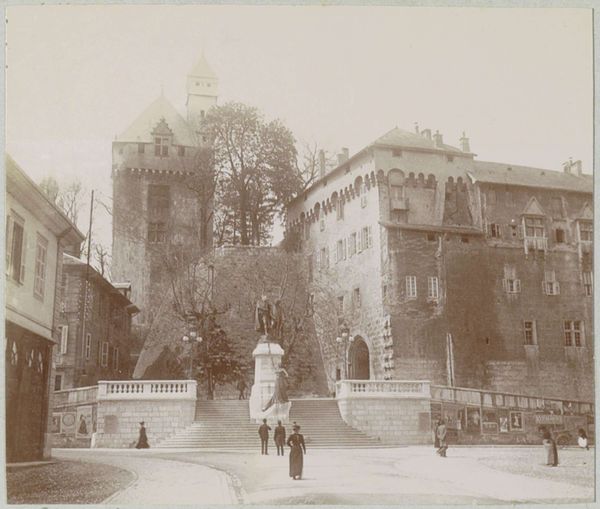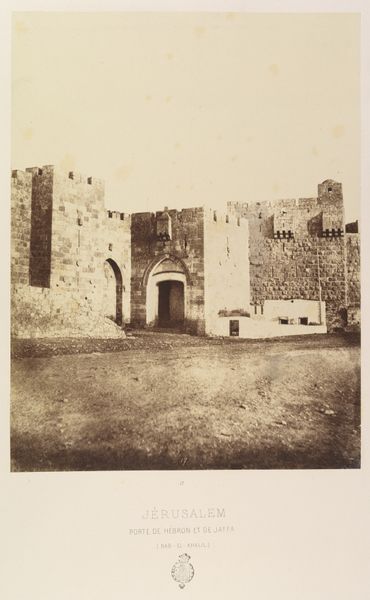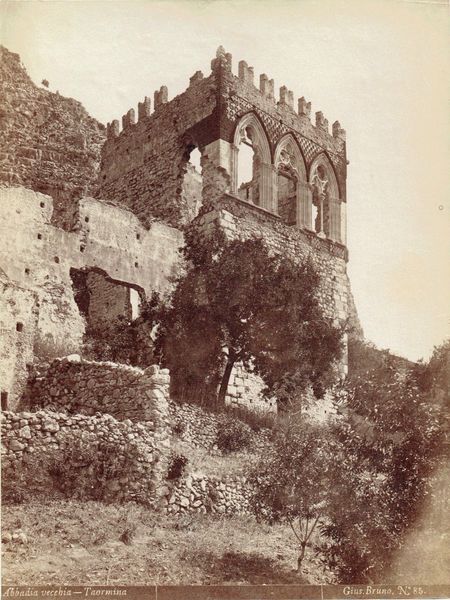
photography, gelatin-silver-print
#
medieval
#
landscape
#
outdoor photograph
#
outdoor photography
#
photography
#
gelatin-silver-print
#
scenic spot
Dimensions: height 75 mm, width 82 mm
Copyright: Rijks Museum: Open Domain
Editor: Here we have Francis Bedford's "View of Raglan Castle, Monmouthshire," taken before 1862, a gelatin-silver print. I'm struck by how this photographic print makes the castle's ruins appear grand yet somehow softened by time. What historical context do you see informing this image? Curator: Bedford's photography gains significance when viewed through the lens of 19th-century British Romanticism and the rise of heritage tourism. The castle is not merely presented as ruins but as a picturesque landscape. The presence of figures subtly hints at how the gentry are engaging with these sites, almost as curated historical experiences. It emphasizes the political undertones of nostalgia. Do you think the inclusion of people impacts our reception? Editor: Definitely, the figures transform the ruin from a mere architectural relic into a place where people connect with history. It seems Bedford captured more than just the landscape; he depicted the beginning of modern heritage tourism. But were the ruins already a popular destination? Curator: Yes, the popularization of picturesque landscape painting helped to cultivate a taste for ruins. Railway expansion also granted access. Bedford's work solidified Raglan Castle within this cultural appetite and promoted the ideal. Also note, his art directly informed social ideas around history and national identity. Editor: So, it’s not just a ruin but a stage for constructing national identity. Photography was fairly new, but do you think its novelty contributed to its popularity? Curator: Exactly. Photography's claim to objective representation lent authority, subtly influencing social perceptions of the past. Its newness would offer a scientific lens, that would then influence popular consumption. In summary, what aspects resonate most with you? Editor: Understanding the photo's link to burgeoning tourism and how it actively shaped, not just recorded, British history provides a new layer of understanding for me. I initially only saw ruins but missed the narrative of heritage tourism at play. Curator: Absolutely, considering how the past is packaged and presented enhances how we appreciate its influence on culture and public memory.
Comments
No comments
Be the first to comment and join the conversation on the ultimate creative platform.



